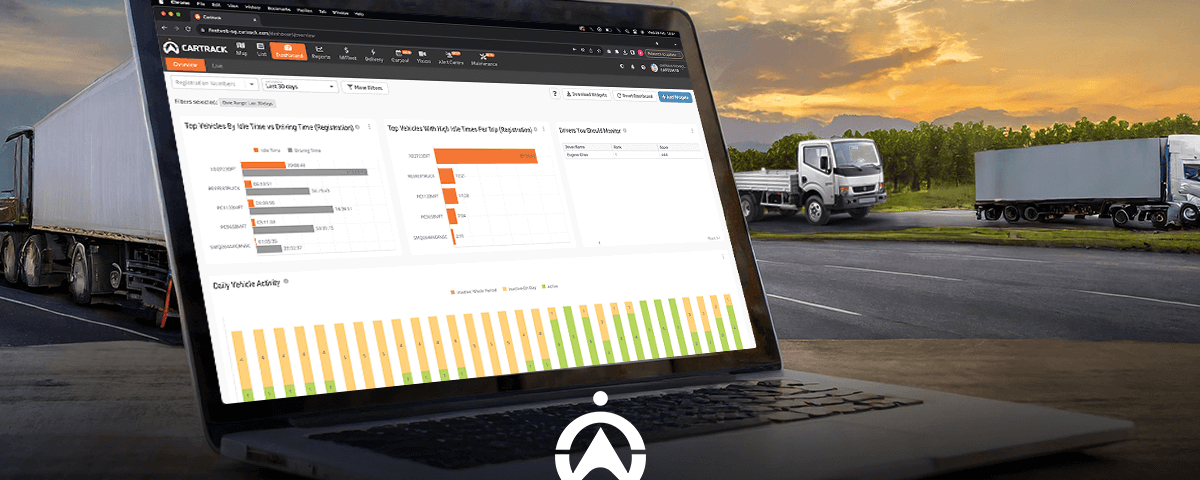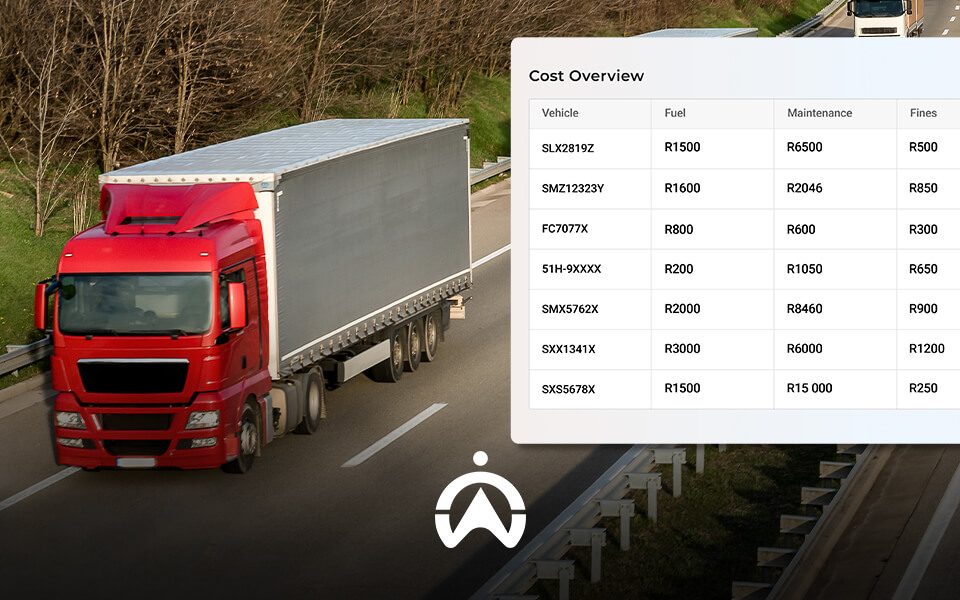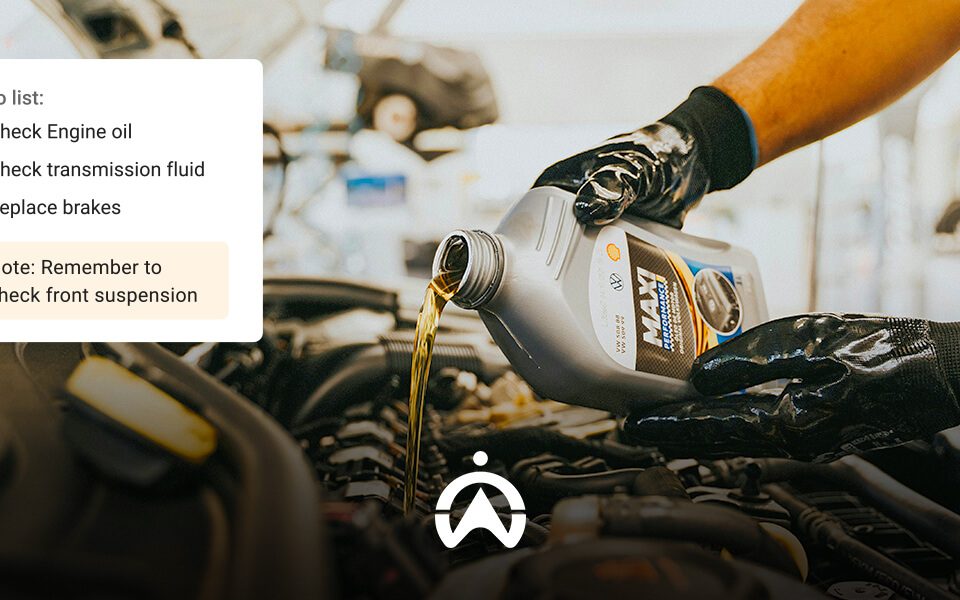Fleet Management Software Costs: What You Need to Know and How to Find the Best Value
Whether handling deliveries, transporting clients, running a field service operation, or managing a trucking fleet, you want to do it well and fast — fleet management software is crucial to operational success.
But, with a range of fleet management solutions available, understanding the costs involved and choosing the right one for your business can be challenging.
Let’s unpack these costs, get tips, and find your perfect solution.
What is fleet management software?
Fleet management software (FMS) is a digital solution created to assist businesses in overseeing and controlling their fleet of commercial vehicles. This tool simplifies organisation and enhances the efficient operation of business vehicles.
It acts as a central hub, consolidating information from various sources and presenting it in a user-friendly format. This allows fleet managers to gain valuable insights, streamline operations, and optimise performance across their entire fleet.
.png)
The technology behind Fleet management software
Fleet management software usually doesn’t need special equipment since it’s mostly online and can be accessed through computers or phones. But it often teams up with helpful gadgets to collect and send data, like:
1. Hardware:
- GPS trackers: Installed in vehicles, these devices can track location, mileage, and engine data in real time.
- Telematics units: These units combine GPS technology with other sensors to collect additional data like fuel consumption, engine diagnostics, and driver behaviour.
- Onboard diagnostics (OBD-II) devices: Plug into vehicles to monitor engine health, fuel consumption, and fault codes.
- Mobile apps: Drivers can use apps on smartphones or tablets to receive dispatch information, update logbooks, and communicate with dispatchers.
- Dashcams and in-vehicle cameras: Capture visual evidence of driving behaviour and situations around the vehicle.
2. Software platforms:
This is the brains of the operation! The software collects data from the hardware and combines it with additional information like driver schedules, maintenance records, and fuel costs. It then processes and analyses the data, providing users with:
- Real-time dashboards: Display vehicle locations, fuel levels, driver activity, and other critical information.
- Detailed reports: Offering insights into fuel efficiency, driver behaviour, maintenance needs, and overall fleet performance.
- Alerts and notifications: Highlighting potential issues, such as speeding, unauthorised stops, or maintenance requirements.
3. User interface:
The user interface is how you interact with the software platform. It can be accessed through a web browser or mobile app, allowing users to:
Monitor their fleet in real time.
- Manage maintenance schedules and dispatch drivers efficiently.
- Analyse reports and identify areas for improvement.
- Communicate with drivers and assign tasks.
Fleet management software: a detailed breakdown
Fleet management software helps managers effectively juggle all their responsibilities.
It collects data from the fleet via GPS devices, telematics systems, and sensors, then crunches the data to give fleet managers valuable insights and actionable tips.
After GPS trackers have been installed, the following process starts:
- Data collection: The software gathers real-time info from each vehicle — where they are, how fast they’re going, how much fuel they’re using, and even engine diagnostics and driver behaviour.
- Data processing: The software processes the collected data to find patterns and spot anything unusual. Advanced algorithms can be used to analyse the data and generate actionable insights.
- Monitoring and tracking: Fleet managers can monitor and locate their vehicles in real-time, making sure they’re on the right route and keeping up with the schedule. This allows them to track vehicles, optimise routes, and ensure schedule compliance.
- Maintenance management: Vehicles need their pit stops every once in a while. Fleet management software helps schedule and manage maintenance tasks, like oil changes, tyre rotations, and inspections. Maintenance alerts and reminders are generated based on vehicle usage and predefined schedules.
- Driver management: This software provides tools for managing drivers, including tracking driver performance, monitoring driving behaviour, and managing driver tasks.
- Reporting and analysis: This application compiles all the data into easy-to-read reports. Want to know your fleet’s fuel efficiency or maintenance costs? Just pull up the dashboard, and voilà – it’s all there.
Understanding fleet management software costs
When it comes to the price tag of fleet management software, it all comes down to what your business needs. Just like you wouldn’t randomly walk into a showroom and buy a car on a whim, choosing the right FM software requires consideration for your operations and a clear financial understanding.
Here are five key points or rather questions to ask before making a purchase:
- How many vehicles do I have?
FMS costs typically scale with the size of your fleet. The more vehicles you have, the higher the overall cost is.
- What types of vehicles are in my fleet?
Managing fleets of heavy-duty trucks or specialised vehicles might involve sensors and features influencing costs.
- Which features are important for me?
Advanced features like GPS tracking, route optimisation, driver behaviour monitoring, and maintenance scheduling can add to the cost of FMS.
- What contract length suits my operations?
Longer contracts may offer discounts or lower monthly rates, but it’s essential to consider the long-term implications and flexibility.
- Do I need additional hardware?
Sometimes, you might need additional equipment like GPS trackers to install on your scooters. Think of these like the phone case you buy to protect your phone. They have a one-time cost.
The best way to understand the exact cost is to contact different vendors for a quote, but remember: smaller fleets typically pay less than larger ones.

Additional factors to consider
After finding exactly what your fleet needs, which add-on features would best suit your fleet, and how much the initial cost will be, take a step back to understand the full spectrum of costs for your chosen solution.
- Upfront costs vs ongoing expenses:
Evaluate both upfront implementation costs, which are installation, training, etc., and ongoing subscription fees based on your fleet size and add-on features to determine the total cost of ownership for the management software.
- Return on investment (ROI):
Instead of just spending money, think of your software as an investment. Consider the potential payback in terms of cost savings and improved operations. Can the software help you save on fuel, reduce maintenance costs, or improve driver productivity?These savings can offset the initial investment and generate a positive ROI.
- Scalability:
Choose a solution that can scale with your business as it grows, avoiding the need for costly upgrades or migrations in the future.
- Hidden costs:
Be mindful of hidden costs, such as additional fees for customisation, integration, or support services.
By understanding these cost considerations, you can make an informed decision and select a fleet management software that not only fits your budget but also suits your fleet.
Do needs have a price? Assess your fleet’s to find the best value
Don’t just buy the first FMS that pops up when researching, get the one that fits your business like a glove, grows with you, and is easy to use.
Consider factors like:
- Industry: Different industries have unique needs. For example, delivery companies might prioritise features like route optimisation and driver behaviour monitoring, while construction companies might focus on fuel management and maintenance scheduling.
- Fleet size and composition: The number and types of vehicles in your fleet will influence the required functionalities and impact the overall cost.
- Desired features and functionalities: Identify the specific features that are most important for your operations and focus on solutions that offer those functionalities at the most reasonable cost.
Let’s put this to the test: selecting the best fit requires a thorough understanding of your industry and business needs.
This section delves into the key considerations for assessing a fleet’s needs before making this critical decision, focusing on the top 3 industries:
1. Delivery:
- Priority: On-time delivery
– Real-time GPS tracking: With GPS vehicle tracking, FMS enables real-time visibility of delivery vehicles, ensuring on-time arrivals and managing customer expectations.
– Route optimisation: FMS helps optimise delivery routes, reducing mileage, fuel consumption, and delivery times while improving overall efficiency. Coupled with route planning, fleet managers would be able to factor in traffic conditions, package size, and delivery windows.
– Vehicle maintenance: FMS automates maintenance scheduling, tracks vehicle diagnostics, and sends alerts for timely servicing, minimising downtime and prolonging vehicle lifespan.
– Driver safety: Driver behaviour management features are available to monitor driver behaviour like speeding, harsh braking, and idling, promoting safety and potentially reducing insurance premiums.
2. Field Service:
- Priority: Maximising technician productivity
– Efficient scheduling and dispatching tools: To assign jobs to the nearest available technician based on skills and location. The Cartrack Delivery tool can be a great asset to in-field services.
– Real-time communication features: Fleet management software offers communication features such as messaging and job updates, ensuring seamless communication between field technicians, dispatchers, and customers.
– Asset tracking: FMS enables real-time tracking of field service vehicles and equipment, enhancing visibility, security, and asset utilisation.
– Compliance management: Fleet management software helps field service companies ensure compliance with regulatory requirements, safety standards, and industry best practices through automated reporting and monitoring features.
3. Transportation & Logistics:
- Priority: Cost optimisation
– Route optimisation: With this, fleet management software can reduce mileage, fuel use, and delivery times by simply refining delivery route planning. It analyses factors like traffic and package size to make routes more efficient, saving money in the process.
– Fuel Management: FMS helps manage fuel consumption, optimise routes to reduce mileage and fuel costs, and monitor driver behaviour to promote fuel-efficient driving practices. Cartrack Mifleet, a dedicated cost management system, is a great tool for this. It can be used to keep track of fuel usage and how much is being spent on fuel simultaneously.
– Vehicle tracking units: By knowing the exact whereabouts of each vehicle, fleet managers can optimise dispatching, monitor driver behaviour, and ensure that vehicles stick to planned routes. This enhances efficiency, reduces idle time and ultimately leads to cost savings.
Beyond the price tag: Get the best fleet management solution
While the cost is important, it shouldn’t be the determining factor when choosing an FMS solution. The right solution will meet your specific needs, provide beneficial features, and ultimately deliver the best value for your investment.
Here’s another factor to consider when searching for a solution that aligns with your business’s specific needs: Does it provide the features your business needs to operate?
Sought-after features
- GPS tracking & geofencing: Foundational features that provide real-time location tracking, route history, and alerts when vehicles enter or leave designated zones. These are critical for route optimisation, safety, and vehicle monitoring.
- Route optimisation: Advanced software suggests optimal routes based on real-time factors like traffic, weather, and construction delays. This helps reduce fuel costs, improve delivery times, and maximise fleet efficiency.
- Fuel management: Detailed fuel consumption monitoring, identification of inefficient driving practices (speeding, idling), and detection of potential fuel theft. Directly impacts operational costs.
- Driver behaviour analysis: Tracks driving habits like harsh acceleration, braking, and speeding. Helps improve safety, reduce accidents, and potentially lower insurance premiums.
- Maintenance scheduling & alerts: Proactive management of vehicle maintenance, including automated reminders for oil changes, inspections, and more. Reduces downtime, prevents costly repairs, and extends vehicle lifecycles.
Choose Cartrack’s best-value fleet management solutions
Time to make navigating the world of fleet management software a breeze with Cartracks endless options promising efficiency and cost savings. We offer industry-leading fleet management solutions and a robust suite of features to tackle your fleet’s most pressing challenges like:
- Real-time GPS tracking and route optimisation
- Fuel management and driver behaviour monitoring
- User-friendly platform for easy adoption
- Scalability to adapt to your growing business
- Unwavering support from our dedicated team
What sets Cartrack apart?
Apart from offering one of the most affordable solutions for fleet management, we believe in value beyond cost, offering a comprehensive suite of features that can be tailored especially for your business.
- Global footprint: Cartrack boasts a massive 1,9 million+ user subscribers across 23 countries, with an additional 110,000 businesses who trust in our solutions.
- Always-on quality customer service: Our dedicated team provides 24/7 customer support, ensuring you have the assistance you need whenever you need it.
- Ever-evolving tech solutions: Our products are at the forefront of technological development, allowing you to conduct your fleet operations with advanced AI and smart products geared for growth.
See how Cartrack delivers more than just fleet tracking
Cartrack’s innovative solutions empower businesses to optimise operations, enhance safety, and ultimately, maximise the value of their fleet management investment.
See firsthand how Cartrack Swaziland sets itself apart in the world of fleet management software.
Ready to unlock fleet cost-saving benefits with Cartrack Swaziland?
Your search for a trusted fleet management to help you manage all your fleet-related cost is over. Our commitment goes beyond simply offering software. We’re dedicated to becoming your trusted partner in streamlining your fleet with our solutions.




